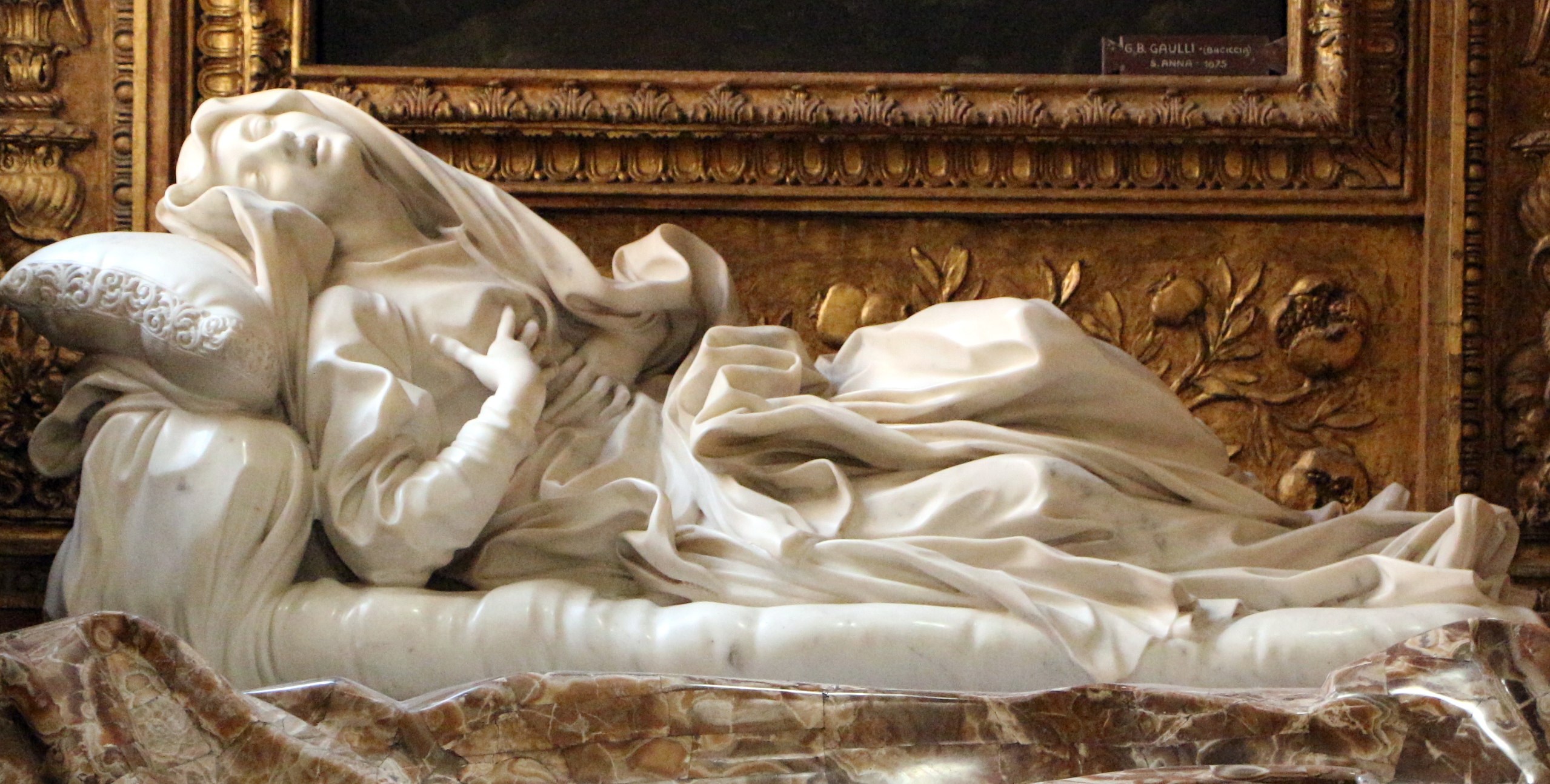This time I do not want to talk about a work, at least not directly, but about the story behind it.
It was January 28, 1671 when Clement X, who had been elected to the papal throne a year before, with a “breve” proclaimed blessed Ludovica Albertoni, a Franciscan tertiary who lived at the turn of the fifteenth and sixteenth centuries.
Ludovica Albertoni was born the daughter of nobles in 1473-74, and from a young age she seems to display an uncommon religious sentiment. At a young age she married the Roman nobleman Giacomo Della Cetera by whom she had three daughters, but his death in 1506 triggered a legal war with his family who wanted to take her inheritance from her. Having won the lawsuit and conveniently accommodated her daughters, Ludovica entered the Franciscan order as a tertiary, dedicating herself tirelessly to works of charity. Particularly intense was her commitment to rescue less fortunate girls from prostitution or forced marriages, teaching them how to weave in order to gain even a minimum of independence, and during the mournful months of the Sack of 1527 during which she earned the somewhat Pasolinian title of “Mamma di Roma.” She died in 1533 of unspecified “fevers,” perhaps malaria, and was buried in the Della Cetera family tomb in San Franceso a Ripa, a church she frequented assiduously.
As much as her hagiography reports more than suitable episodes of ecstasy and levitation, Ludovica, until the rise of Emilio Altieri aka Clement X did not seem to be on the launching pad of the Congregation of Rites, but beatification is to be done and for a quite specific reason.
The newly elected Clement X has no young male relatives to fill the now proverbial position of Cardinal Nepote so he marries a female heir to a member of the Paluzzi Albertoni family, longtime nobles who by then were in deep financial troubles. Thanks to this family relationship, Clement X adopts the whole family renaming them Altieri like himself and coincidentally also included in the package is Cardinal Paluzzo, an able and experienced prelate already in vogue at the time of Urban VIII, who becomes Cardinal Altieri and rises to the rank of Cardinal Nepote.
At this point prestige dictates that the family chapel at San Francesco a Ripa should be dignified in some way, and who better than Ludovica, the only somewhat noteworthy figure in the family up to that point? A competition is announced in which the finest names in sculpture of those years participate, but the winner is Bernini, and not because “he is Bernini.” In fact, unbelievably, he volunteers to do the work for free. Well, not exactly for free: a price, however trivial, must be paid and is known to most people to the point of even ending up in a Rome Notice, the equivalent of today’s gossip press. The counterpart that Bernini asks the Pope for is a pardon for his younger brother Luigi (the one who as a young man wanted to cheat him of Costanza Bonarelli, made immortal by one of the master’s most beautiful works), repeatedly caught in the act of sodomy and already repeatedly pardoned thanks to his surname, in 1670 he was caught raping a boy in an enclosure (“in the presence of the statue of Constantine,” indeed) causing the unfortunate several fractures (some say sixteen). That’s the straw that breaks the camel’s back, at which point his name barely helps to commute his sentence to exile and confiscation of property. Knowing this, even Queen Christina, ubiquitous in Baroque Rome, intercedes for him whereupon Clement X decides to kill two birds with one stone by saving a lot of money and playing it safe with the now aged but still freakishly good Bernini.
Of course, the chronicles have not handed down the reaction of the poor multifractured boy, but the doubt that his satisfaction was a bit bitter lingers.
